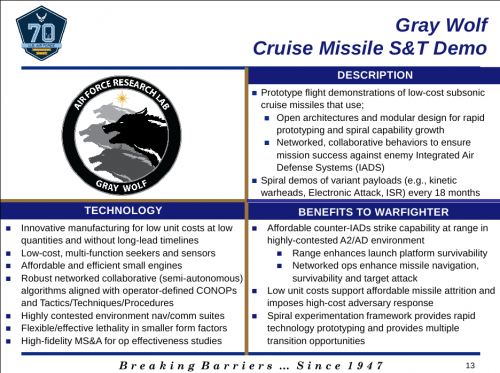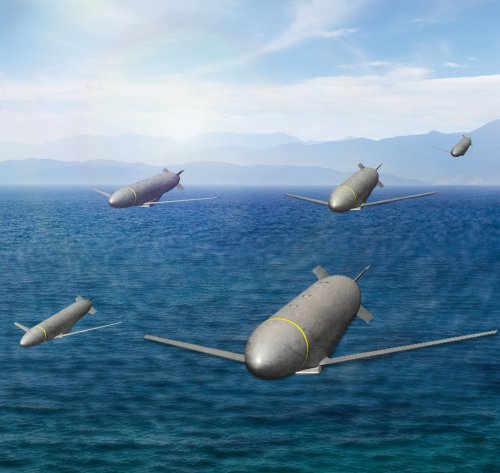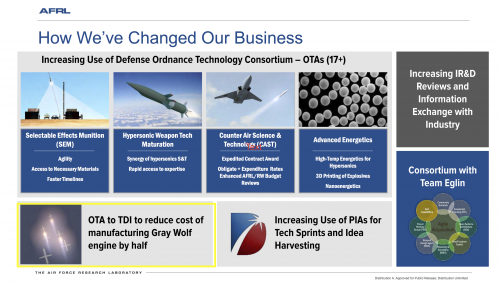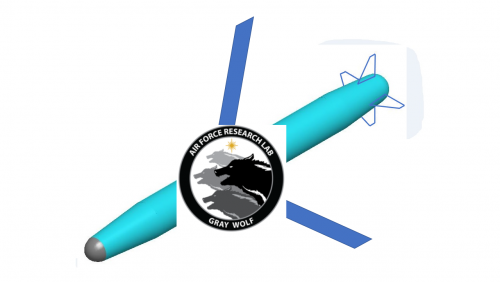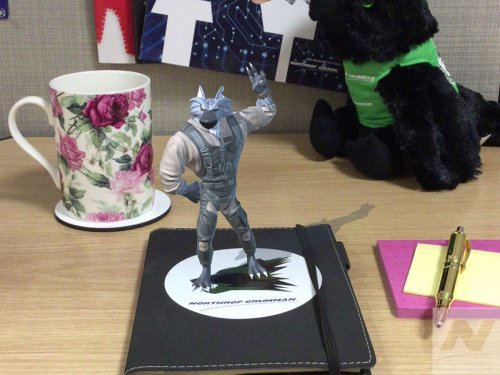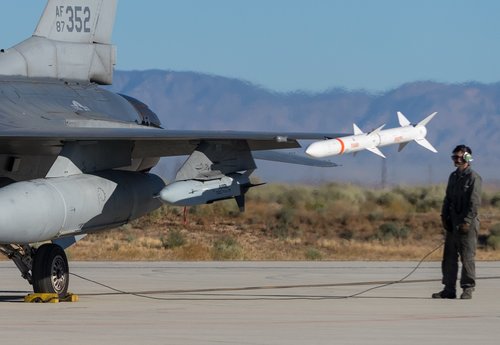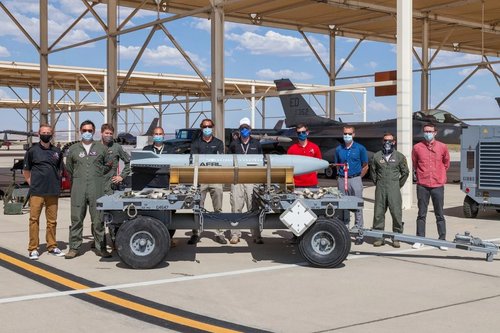- Joined
- 21 April 2009
- Messages
- 13,566
- Reaction score
- 7,193
Research funding to grow Air Force cruise missile portfolio slated for 2017
October 20, 2016
The Air Force Research Laboratory will soon release its request for proposals for designs of a new "Gray Wolf" subsonic cruise missile, with at least one research and development contract expected to be awarded in late fiscal year 2017. Gray Wolf, a classified science and technology demonstration program managed by the AFRL Munitions Directorate, will offer prototypes of an affordable, networked, standoff cruise missile to be used against enemy integrated air defense systems. The end products are meant to broaden the service's portfolio of weapons that can be deployed in highly contested environments.
"The operational concept is to employ Gray Wolf in concert with current inventory weapon systems to enhance overall mission effectiveness," service spokeswoman Sharon Branick wrote in an Oct. 14 email.
Air Force officials want to determine whether the missile can be effectively used in networked, collaborative formations, and to define the tactics, techniques and procedures needed to do so. The spokeswoman did not specify how the service wants the Gray Wolf to differ from other subsonic cruise missiles already in use, like Lockheed Martin's Joint Air-to-Surface Standoff Missile, but noted that the Air Force is looking for ways to cut costs.
"Can the Gray Wolf missile be produced at very low unit costs and what are the associated design and manufacturing activities required to do so?" Branick asked. "For example, are there innovative manufacturing concepts that would support low costs when built at low-rate quantities and without long-lead time lines? What capabilities would need to be traded off in order to maintain the low unit
costs?"
Around 140 representatives from prime contractors, subcontractors, suppliers and the government attended industry days held at Eglin Air Force Base, FL, in August and September to familiarize industry with the development effort, Branick wrote. Attendees were briefed on "open architectures, low-cost manufacturing, networked collaboration, low-cost sub-systems and test certification processes" and "ongoing technology efforts that could be applied to the Gray Wolf program."
Lockheed Martin intends to respond to the broad agency announcement, company spokesperson Melissa Hilliard said. A request for proposals is expected out in November or December, according to a Sept. 21 notice of contract action on the Federal Business Opportunities website. The service may award one or more prime contracts to companies that propose their own Gray Wolf design in late FY-17 for the first spiral effort, followed by subsequent 18-month spirals through FY-22. Contractors will be responsible for designing, developing, manufacturing and testing their prototypes. Branick did not answer when the final product could be fielded, how much money will be awarded or other questions on specific program requirements. -- Rachel S. Karas
October 20, 2016
The Air Force Research Laboratory will soon release its request for proposals for designs of a new "Gray Wolf" subsonic cruise missile, with at least one research and development contract expected to be awarded in late fiscal year 2017. Gray Wolf, a classified science and technology demonstration program managed by the AFRL Munitions Directorate, will offer prototypes of an affordable, networked, standoff cruise missile to be used against enemy integrated air defense systems. The end products are meant to broaden the service's portfolio of weapons that can be deployed in highly contested environments.
"The operational concept is to employ Gray Wolf in concert with current inventory weapon systems to enhance overall mission effectiveness," service spokeswoman Sharon Branick wrote in an Oct. 14 email.
Air Force officials want to determine whether the missile can be effectively used in networked, collaborative formations, and to define the tactics, techniques and procedures needed to do so. The spokeswoman did not specify how the service wants the Gray Wolf to differ from other subsonic cruise missiles already in use, like Lockheed Martin's Joint Air-to-Surface Standoff Missile, but noted that the Air Force is looking for ways to cut costs.
"Can the Gray Wolf missile be produced at very low unit costs and what are the associated design and manufacturing activities required to do so?" Branick asked. "For example, are there innovative manufacturing concepts that would support low costs when built at low-rate quantities and without long-lead time lines? What capabilities would need to be traded off in order to maintain the low unit
costs?"
Around 140 representatives from prime contractors, subcontractors, suppliers and the government attended industry days held at Eglin Air Force Base, FL, in August and September to familiarize industry with the development effort, Branick wrote. Attendees were briefed on "open architectures, low-cost manufacturing, networked collaboration, low-cost sub-systems and test certification processes" and "ongoing technology efforts that could be applied to the Gray Wolf program."
Lockheed Martin intends to respond to the broad agency announcement, company spokesperson Melissa Hilliard said. A request for proposals is expected out in November or December, according to a Sept. 21 notice of contract action on the Federal Business Opportunities website. The service may award one or more prime contracts to companies that propose their own Gray Wolf design in late FY-17 for the first spiral effort, followed by subsequent 18-month spirals through FY-22. Contractors will be responsible for designing, developing, manufacturing and testing their prototypes. Branick did not answer when the final product could be fielded, how much money will be awarded or other questions on specific program requirements. -- Rachel S. Karas

